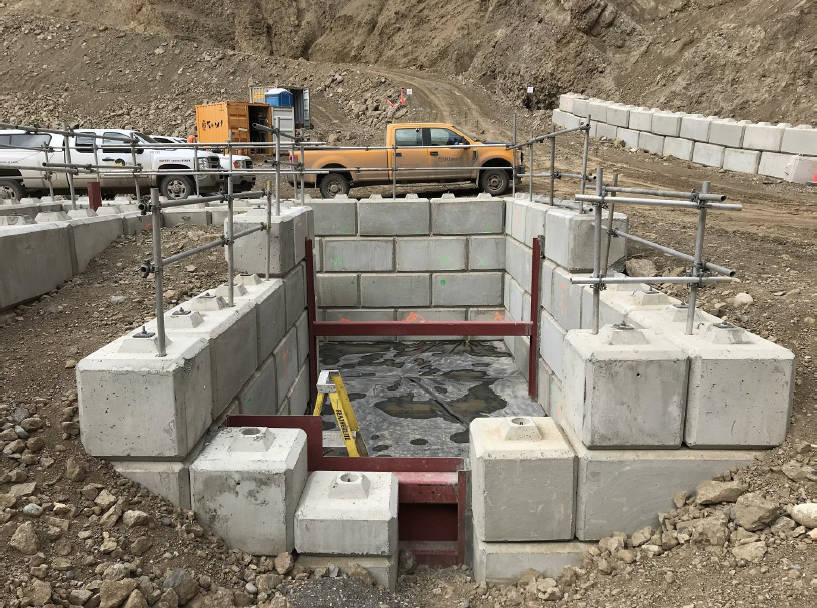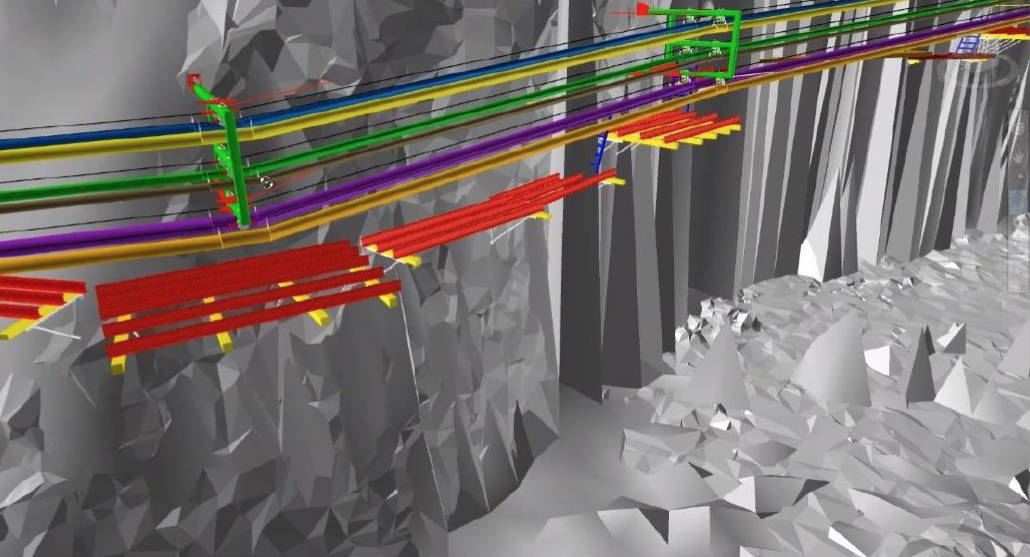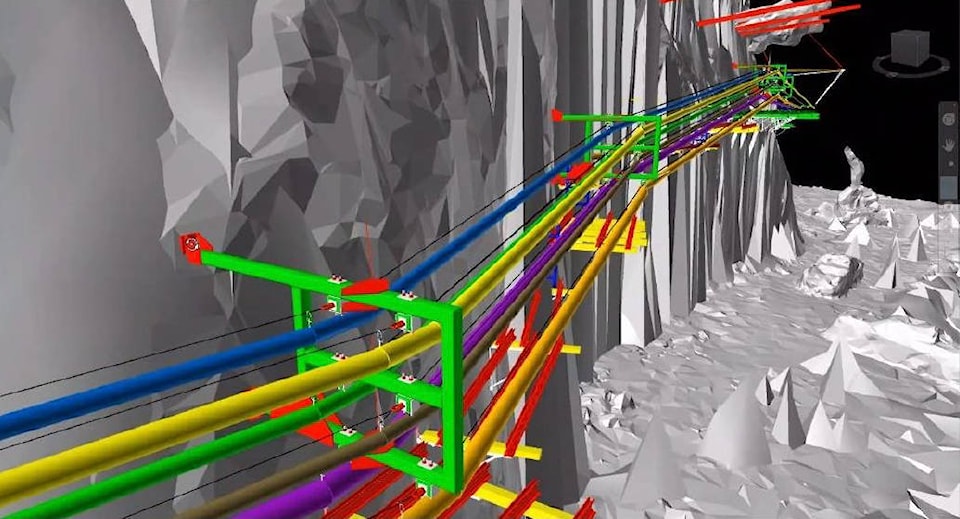Just like its name suggests, the ‘Whooshh Passage Portal’ will soon be propelling salmon stocks past the Big Bar landslide site on the Fraser River through a ladder and tube system.
The new fish passage network is part of ongoing mitigation efforts since the landslide was discovered in late June of 2019, causing 75,000 cubic metres of rock to fall into the river roughly 100 kilometres north of Lillooet and, in the process, blocking spawning salmon passage into B.C.’s Interior.
Gwil Roberts, director of landslide response for Fisheries and Oceans Canada working at the site, said the system will be ready soon to provide salmon stocks a boost along the Fraser River, past the slide site, once they begin arriving in the near future.
“As we are moving right now into our spring and summer works programs, we have seen water rising at the site as the snowpacks have melted … as a result of the higher volumes, fish passage is prevented,” Roberts said.
“This was anticipated so we were and are putting measures in place to ensure fish passage by other transport means.”
Roberts said the mitigation team is currently preparing the site for the final pieces of the Whooshh Passage Portal (WPP) to arrive. The WPP is being leased from Seattle-based Whooshh Innovations.
READ MORE: First Nations want Big Bar landslide cleared ASAP to allow fish passage
A concrete fish ladder has also been constructed to help channel fish into the WPP.
“A lot of effort has gone into this system and we’re very pleased with the progress so far,” Roberts said. “The Whooshh System is on a platform above the river level, fish make their way up to a level [through the fish ladder] where they can then continue into the Whooshh. Fish will sense the existence of flowing water coming down the ladder, move up the ladder, come around into a holding pen and from there they will move into the steep pass system of the Whooshh and continue through, sorted and scanned, into tubes and be pushed up river to get over the slide site.”
Fish will spend about 20 seconds inside the system, moving at roughly eight metres per second.
Once river levels subside, Roberts said the mitigation team has cleared a passageway on the west side of the Fraser River for fish to swim through, as well.
If absolutely necessary, Roberts added there is also an option to truck and transport salmon by tank past the landslide site.
Salmon arriving at the slide site include chinook, coho, sockeye, pink and steelhead.
“Those fish all arrive at different times and we will have the Whooshh available to move them,” he said. “If we get drops [in water level] they’ll be able to move up the slide on their own on the west side. What we put in place are systems to assist where needed.”
While seeing a high mortality rate in May and June of 2019, Roberts expects to see salmon death almost completely avoided this year.
“There should be no mortality,” he said, noting DFO has been working closely with First Nations and the Province to find solutions to the problem.
“We see the fish here as vital to all things for the salmon fishery and we need to find an answer … we are looking at the destruction of salmon stock if we don’t help, or facilitate, and let fish passage happen.”
greg.sabatino@wltribune.com
Like us on Facebook and follow us on Twitter


